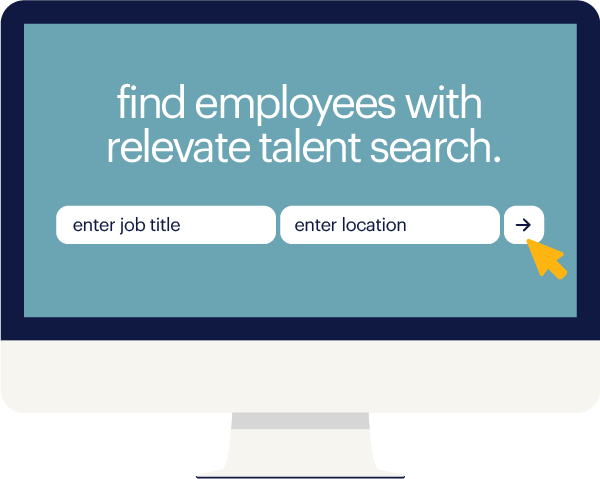There are promising signs that manufacturing and logistics companies are finally seeing the writing on the wall when it comes to workplace safety — and hopefully that means relevant safety messaging is written on the walls of their facilities, too. Just consider the following:
- Fatal occupational injuries in private manufacturing recently dipped to their lowest level since 2003.
- Musculoskeletal disorders (MSDs) resulting in days away from work (DAFW) decreased by as much as 32 percent in the past few years for manufacturers across the board.
Encouraging as these indicators may be, they only tell part of the story. For example, fatal on-the-job falls recently reached their highest level since 1991, when the Bureau of Labor Statistics first started tracking them. Moreover, the recently announced $13 million settlement awarded to a temporary worker at a Tesla factory makes it clear that safety planning in joint-employer environments must take into account all workers, not just FTEs.
Otherwise, you risk catastrophic bottom-line consequences — and you aren’t positioning yourself as an employer of choice. Fortunately, the safety experts at Randstad are here to help you avoid them. In this article, we lay out a five-stage safety maturity and excellence model, as well as seven safety focus areas for improvement. You’ll learn:
- why safety must be woven into business strategy, leadership, employee engagement, workplace culture and more
- the key role of safety professionals and metrics in organizational safety maturity
- how to assess your current level of safety maturity
- how to begin developing a roadmap to safety excellence at your organization today
Start with these insights and you’ll be on the path to best-in-class safety practices in no time.
the five stages of safety maturity
Viewed from a high level, nearly every manufacturing and logistics company today can be bucketed into one of the following five stages when it comes to safety maturity.
restrictive ("no-care culture")
A low level of ownership, both individually and collectively, characterizes the safety culture at these companies. Improvements are generally unwelcome, and shortcuts, accidents and injuries common.
reactive ("blame culture")
Reactive companies are backward-looking, only identifying problems after incidents occur and often resorting to punitive measures for improvements going forward.
in transition ("compliance culture")
These companies rely on regulatory requirements to deliver the message of safety's importance. They may have safety-specific roles and designations internally, but generally tie goal setting back to OSHA metrics or costs.
proactive ("ownership culture")
Proactive companies are currently working to integrate safety into their business models. They tend to have some interdependency among stakeholders for safety improvements, with goal setting linked to actions and performance improvements.
transformative ("safety-as-daily-practice culture")
Key characteristics of transformative companies include clearly defined safety-management systems, as well as intervention strategies that are integrated into the roles and responsibilities of each function. There's also transparent communication and collaboration around safety at all levels of the organization.
Of course, this is only a high-level overview. For example, you might well decide that your organization doesn't fall cleanly into any one bucket, but rather straddles two (or more) — and that's fine. But since you have a far more granular view of the safety practices at your organization, it shouldn't be hard for you to find the stage that best describes your existing approach.
Finally, if you’re still struggling to diagnose your organization’s current safety maturity, check out the simple safety assessment tool we created to help you out.
7 safety focus areas
Securing organization-wide buy-in and commitment to improving safety practices is a major obstacle for many manufacturing and logistics companies today. Indeed, top-down safety improvements, however well intended, are likely to fall flat if they lack engagement at all levels of the operation.
That's why, as you begin to map out your safety transformation, you should be sure to include the following seven areas in your plans.
 Consult with all employees — not just FTEs, but temporary workers, too — to get a baseline understanding of existing safety practices, procedures and the realities on the ground. Tactically, you can accomplish this a number of different ways: simple surveys, pre-shift meetings, annual performance reviews and more.
Consult with all employees — not just FTEs, but temporary workers, too — to get a baseline understanding of existing safety practices, procedures and the realities on the ground. Tactically, you can accomplish this a number of different ways: simple surveys, pre-shift meetings, annual performance reviews and more.
 Establish a safety committee (if you don't have one already) that includes a large number of front-line employees. You can incentivize participation by framing the committee as an opportunity for employees to take on leadership roles and responsibilities.
Establish a safety committee (if you don't have one already) that includes a large number of front-line employees. You can incentivize participation by framing the committee as an opportunity for employees to take on leadership roles and responsibilities.
 Make employees part of the process as you develop new safety policies and objectives. Ask them about health inspections, incident investigations and more. Your people are an invaluable resource for problem-solving sessions, too.
Make employees part of the process as you develop new safety policies and objectives. Ask them about health inspections, incident investigations and more. Your people are an invaluable resource for problem-solving sessions, too.
 Provide employees with incentives for their ongoing participation in safety and health initiatives. It's important these incentives are communicated to all team members as well.
Provide employees with incentives for their ongoing participation in safety and health initiatives. It's important these incentives are communicated to all team members as well.
 Create mechanisms and communication channels that enable employees to safely and confidentially report potential hazards. This can also be a great avenue for them to put forth improvement ideas.
Create mechanisms and communication channels that enable employees to safely and confidentially report potential hazards. This can also be a great avenue for them to put forth improvement ideas.
 Ensure managers not only respond to safety concerns promptly, but communicate to employees the corrective steps they're taking, too. As you implement solutions, you should also strive to involve employees in the process as much as possible.
Ensure managers not only respond to safety concerns promptly, but communicate to employees the corrective steps they're taking, too. As you implement solutions, you should also strive to involve employees in the process as much as possible.
 Assign specific safety-related roles to employees at all levels of the organization. For example, consider designating top-performing front-line employees as embedded safety coaches who can help identify risks and work to develop solutions on an ongoing basis.
Assign specific safety-related roles to employees at all levels of the organization. For example, consider designating top-performing front-line employees as embedded safety coaches who can help identify risks and work to develop solutions on an ongoing basis.
By prioritizing these seven focus areas, you'll be able to take a far more proactive approach to workplace safety. And that, in turn, should not only improve operational efficiency but position you as a more desirable employer, too. It’s the kind of improvement that can pay dividends on your bottom line.
key takeaways
Manufacturing and logistics companies appear to be making headway when it comes to workplace safety, yet it's also clear there's still a lot of work to be done. For example, studies show that more serious workplace injuries occur on Mondays than any other day of the week, but with best-in-class safety processes in place, there's no reason that should be the case. Fortunately, by focusing on the seven areas outlined above — and armed with the insights from our maturity model — you should be able to change that at your organization today.
Looking for additional safety tips and insights? Download our comprehensive safety maturity and excellence brochure today.







